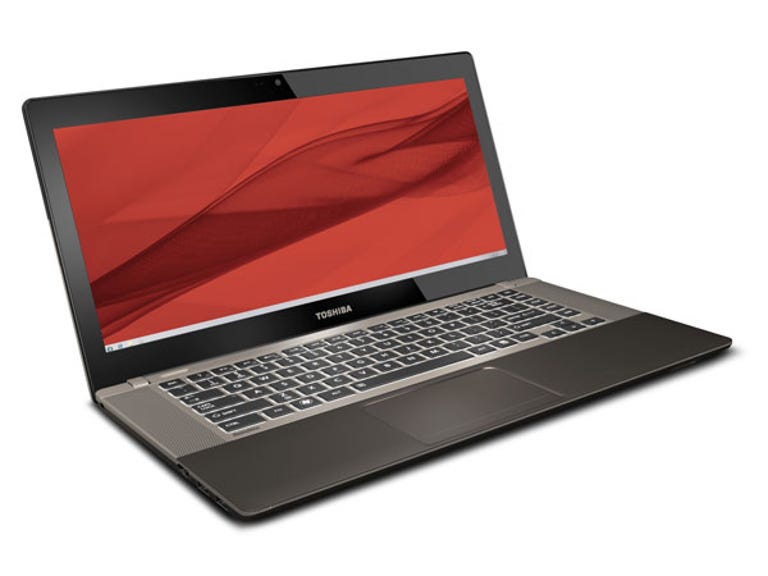 Why You Can Trust CNET
Why You Can Trust CNET Toshiba Satellite U840W review: Toshiba Satellite U840W
It's a little bit different, and we'd hazard a guess that only a few people will be sold by Toshiba's extra-wide display. For those who do get the appeal, they'll also find a well-built, well-featured laptop, with better than usual audio.
Toshiba has gone for something unique in the U840W. Whether it was an opportunity to grab panel offcuts or a genuine want to bring something different, the U840W features a 14.4-inch, 21:9 screen, with a resolution of 1792x768.
The Good
The Bad
The Bottom Line
Connectivity
- USB 3.0: 3
- USB 2.0: 0
- Optical: None
- Video: HDMI
- Ethernet: 100Mbps
- Wireless: Single-channel 802.11n, Bluetooth 3.0
Toshiba's argument is that it's perfect for 21:9 movies — if you've picked up a DVD or Blu-ray that's kept the original aspect ratio (albeit within a 16:9 container), you can use Toshiba's DVD player and hit the cinema button, effectively scaling and cropping the black bars so that it mimics the theatre experience.
If you've got a 16:9 movie, Toshiba's added an extra button to Microsoft Windows' title bars as well — move the window mostly to the left hand side and click it, and it'll snap the window to aspect scaled 16:9. Move the window mostly to the left and click, and it'll snap to take up the remaining space. Apparently, this is for tweeting or taking notes while watching a movie. You can adjust exactly how the apps scale through Toshiba's Split Screen utility, allowing you to select from four default templates, or to create your own.
An extra-wide screen might also appeal to those who have to work between two windows a lot, like multiple documents or file management tools. Windows 7's Aero-snap tool definitely comes in handy here.
Despite the interesting aspect ratio, Toshiba's used a TN panel, meaning viewing angles aren't the best — an odd choice for something that's ostensibly pitched as a movie watching device. The Harmon/Kardon speakers definitely do the hard yards though, providing significantly better sound than is found on most laptops, even if the highs sparkle a bit too much.
The U840W apparently qualifies for the ultrabook label, although the height and extra length makes it appear deceptively heavy. The unit itself is of high build quality, though with an attractive premium finish, a backlit keyboard that's lovely to type on and a large touchpad. Toshiba chooses to invert its F1-F12 keys to its sub functions by default, such as volume and screen brightness, however. this comes with a cost: unlike other manufacturers, this makes it impossible to ALT+F4 out of programs (by default ALT+Fn+F4 here), and may affect other keyboard shortcuts as well. You'll want to use Toshiba's HWSetup tool to revert things to normal.
Three USB 3.0 ports are a nice surprise, although this is dampened somewhat by the inclusion of a 100Mbps Ethernet port, instead of gigabit. HDMI is included, as are headphone and microphone jacks, as well as the ever-present SD card reader. The whole thing runs off a Core i5 3317U, 6GB RAM and a 500GB, 5400RPM hybrid hard drive, paired up with a 32GB SSD, although, the latter reports itself as being 12GB in size and is clearly being used as a cache — the space isn't available to the end user.
Application performance
Choose a benchmark: Handbrake | iTunes | Photoshop | Multimedia
Battery life
Toshiba's battery life is good, although an hour out from the heavy-hitting HP and Dell laptops that dominate the top of the chart.
Conclusion
It's a little bit different, and we'd hazard a guess that only a few people will be sold by Toshiba's extra-wide display. For those who do get the appeal, they'll also find a well-built, well-featured laptop, with better than usual audio.


